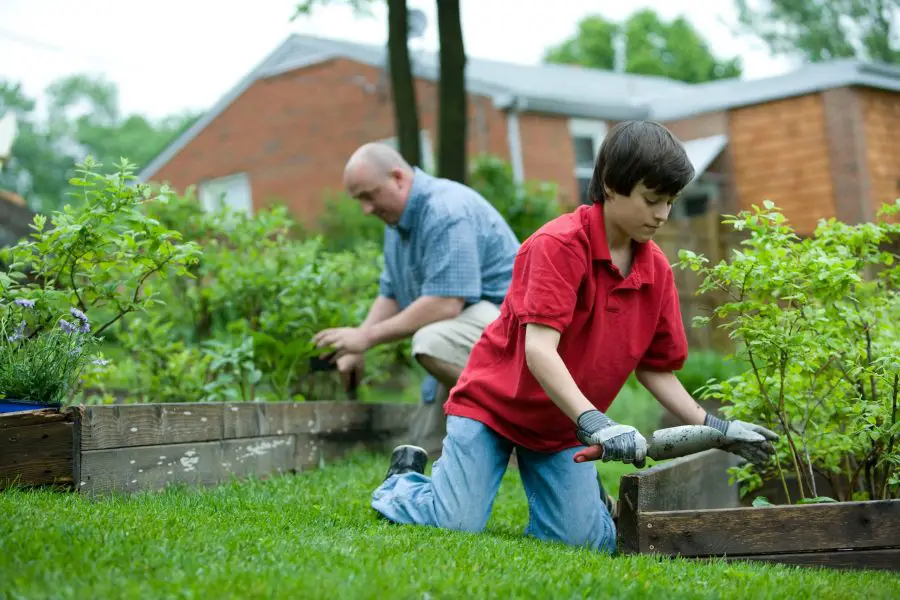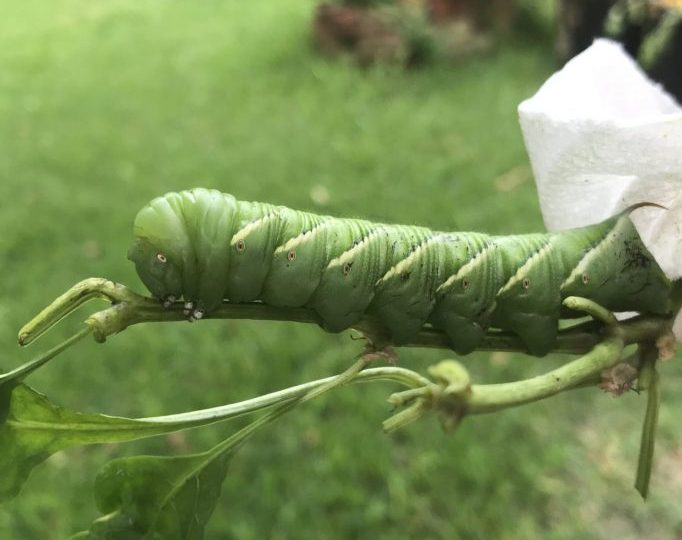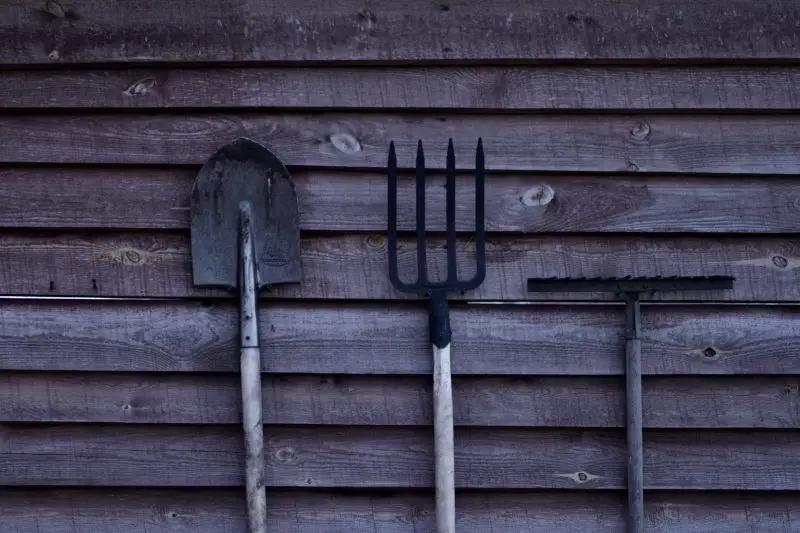Summer is the most extended season in Texas. When the month of July ends, we know the gardener knows he is midway through the season. This time of the season, the garden needs some attention to keep it going till fall. In this post, I will be sharing essential garden chores to maintain your mid-summer texas garden.
Disclaimer: This post may contain affiliate links. Check our full disclaimer here.
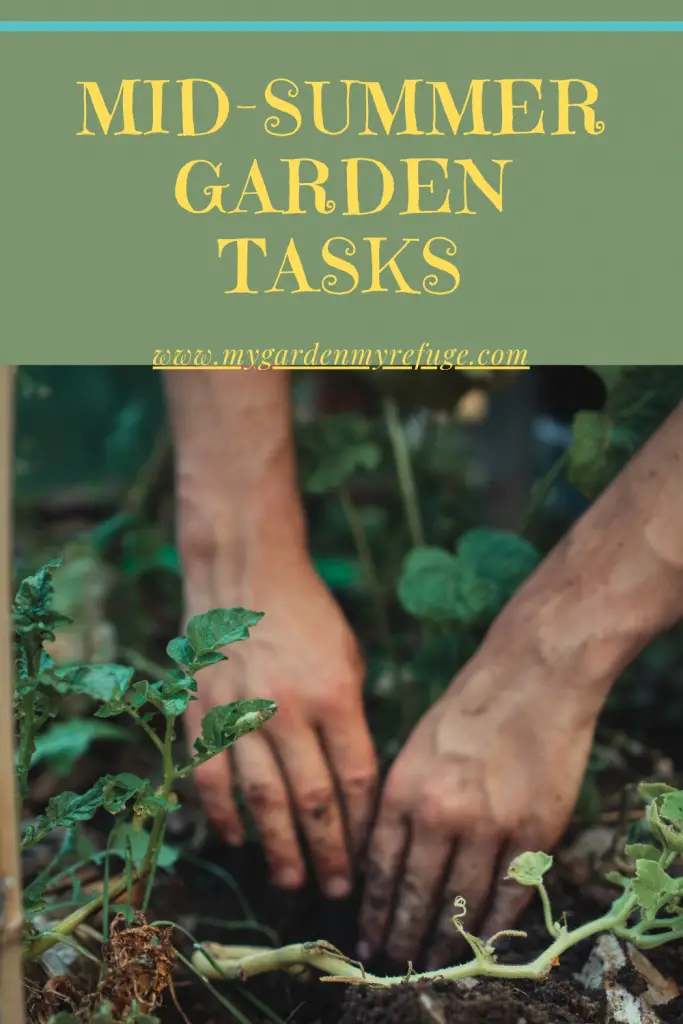
#1 Assess the garden
Assessing the garden is a daily task that does not require much effort or time. So hold your cuppa tea or coffee and stroll around the garden. While enjoying the early morning fresh air and songs of nature, take a closer look at your plants.
Production
Take notes of the crops and varieties that are still in production. They might be your go-to choice for the coming seasons. In my case, I love yard-long beans. They have been the most productive and least problematic crop for the last four years. I try a new variety alongside it every year, and none have outperformed it.
My keepers are yard-long beans, tendergreen cucumbers, okra, Bianca zucchini, Pink Birkley tie-die tomato, Ajvarski, and chocolate pepper.
Pest
Summer is the most difficult growing season when it comes to pests. There are all sorts of bugs popping up every year. Take a closer look at the plants, mainly the leaves, and look for bug damage. Discoloration, holes, scars on fruits and droppings are signs of different bugs dwelling in the garden.
The most common bugs in the warm season are tomato hornworm, aphids, spider mites, stink bugs, squash vine borer, and mealy bugs. However, it is worth mentioning that while some insects are always present, their intensity differs each year. Also, sometimes new bugs appear depending on the weather. Take the example of the tomato hornworm. It took ten years of gardening before encountering it in my garden.
Disease
Plant diseases are also more prominent in the warm season. However, they mainly depend on the weather conditions and variety’s susceptibility. Things to look for in summer crops to identify diseases are yellow or brown spots, sudden wilting, stem and foliage discolorations, and leaf malformation.
Most summer diseases are fungus-related. The hot and humid weather favors their growth and spread. There are also some viral diseases, which are mostly related to the plant’s susceptibility. It is essential to check with the extension office in your area for the list of common diseases and plants that are prone to them.
Irrigation
Mid-summer is a good time to assess our watering habits. First, make sure there is no water wasted through runoffs and leaks. Next, inspect drip emitters for clogging or damage.

#2 Clean up and Refresh
After assessing the garden, it is time to do some damage control and maintenance.
- Cut all the damaged foliage and discard it to slow down the spread of pests or diseases.
- Use organic and pollinator-friendly treatments.
- Pick up fallen plant parts and throw them away from the garden to eliminate any overwintering of eggs and spores.
- Cut back indeterminate tomatoes by a third to give them a chance to restart.
- Add compost and mulch to reduce evaporation and maintain soil moisture longer.
- Trim vining plants to improve air circulation.
#3 Cut your losses
A gardener’s most challenging and heartbreaking task is getting rid of a plant. After months of care and tending, a bond is hard to break. But then, unfortunately, there is an end to everything. Most vegetable plants have a short life. A handful survives an entire season, and a few are short-lived perennials.
When do you know it is time to remove a plant?
- When the plant slows down production, it is time to start considering a replacement.
- Overwhelming pest or disease damage is a signal that the plant’s immune system is weak, and it is time to put it to rest.
- Slow recovery after treatment is another sign of a weak immune system. So it is not worth the effort to keep pushing the plant. Starting a new one is much more rewarding.
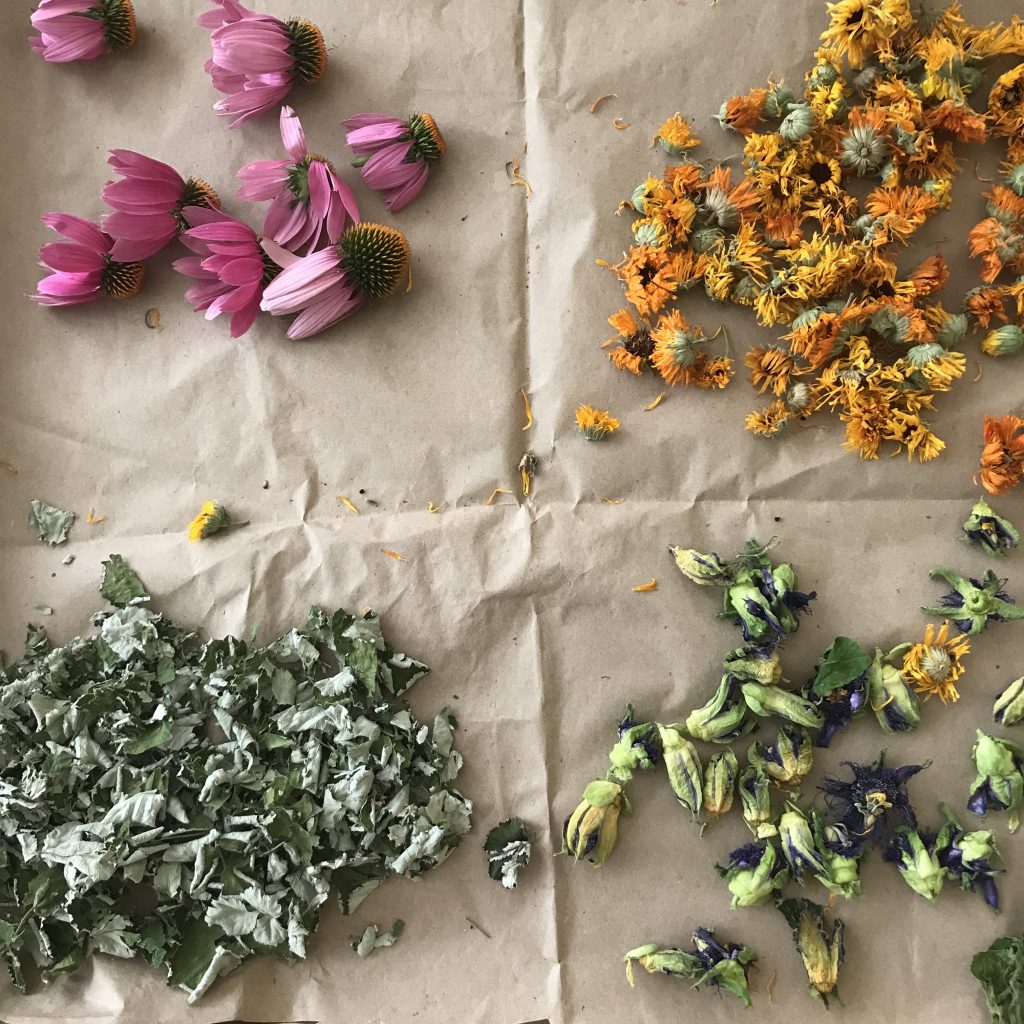
#4 Harvest herbs
Harvesting perennial herbs and stocking my natural medicinal teas cabinet is my favorite summer task and the most satisfying.
Harvest
- Use clean and sharp scissors or pruners to harvest herbs.
- Harvest in the early mornings when the plants are rested from the previous day’s heat and restore their energy.
- Cut back the plant down to the new growth.
- Water it to prevent stress.
CLean
- Before taking the harvest indoors, try to shake it slightly to remove any hiding bugs.
- You can also lay them flat on a tray and leave them for the day in a shady place to allow insects to crawl away.
- Thoroughly wash the herbs in cool water. It is best to submerge them in water. Soil particles and any remaining bugs will sink.
- Remove excess water by shaking, towel drying, or spinner.
Dry
There are different ways to dry herbs.
- Air drying by hanging them or laying them in a tray and then placing them in a dark, airy place.
- Set the oven to a low setting and place the herbs in a tray. It would help if you kept an eye on them to prevent overdrying.
- You can also use a dehydrator.
Store
Once thoroughly dried, store the herbs in an airtight glass jar, and place them in a dark and cool spot for longer shelf life.
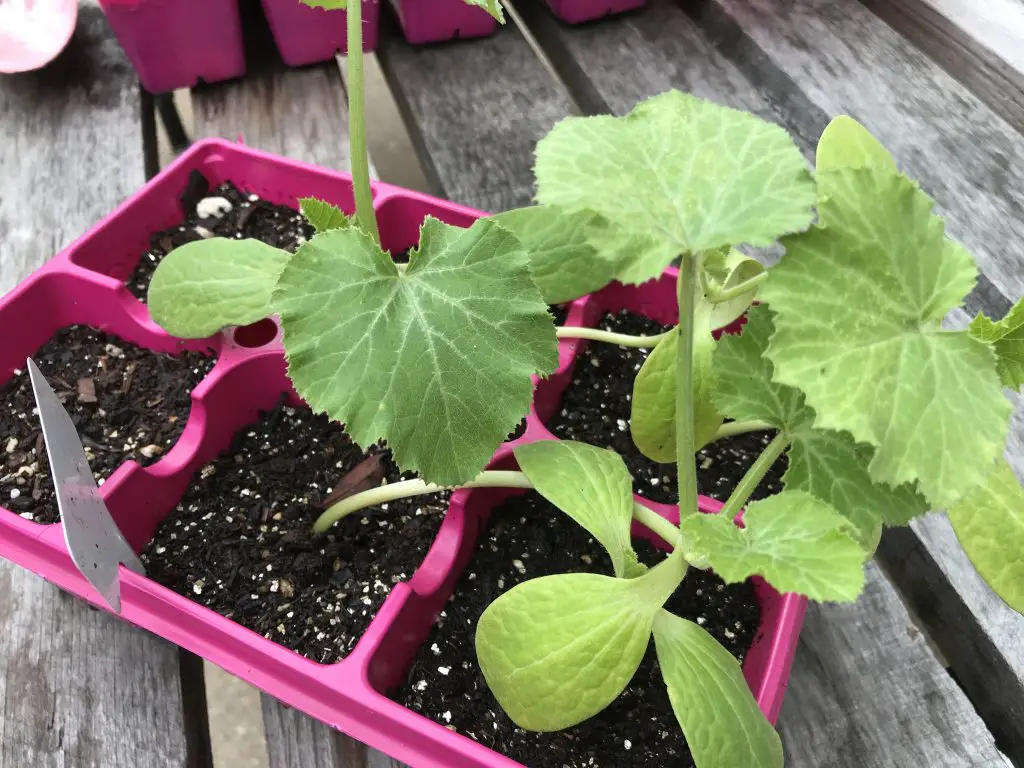
#5 Succession plant
What is succession planting?
Succession planting is the practice of planting crops in intervals to maintain a continuous harvest till the end of the season. Remember when we talked about cutting losses? So, now is the time to plant more of your favorite crops to keep harvesting through fall.
Since this is the second half of the warm season, we know we are coming into our first frost. We all know that the weather is unpredictable and should plan on that. One best practice is planting varieties with a short maturity time to increase the chances of harvest before any early frost.
What to plant in mid-summer?
- Direct sow green beans, basil, cucumbers, squashes, and okra.
- Plant more peppers and eggplants.
- Start tomato seeds for late August planting.
#6 Sart planning for the fall garden
Another gardener’s favorite task is planning for the cool season. During the lull of summer, there is nothing more entertaining and energizing than thinking of a new garden adventure.
a) Take seed inventory
I hope you have a seed storage system. If not, please, check my post on how to store and organize seeds. It is important to have a seed system to stay organized and avoid overordering.
- Look at your seed bank and list the seeds you need to refill.
- Check the “Best by” date to plan on using them first.
- Discard any packets or seeds damaged by mold or so.
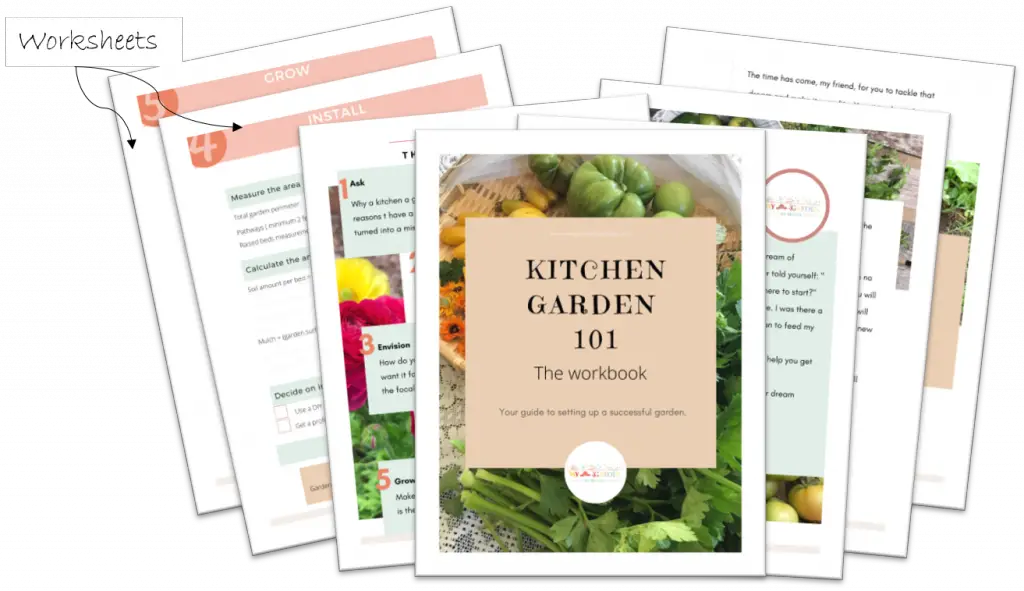
b) Before going shopping
- List everything you wish to grow and the ones you want to give a try.
- Sketch your garden and find a spot for each crop.
- Set up a budget for the new growing season to avoid overspending.
- Review your list and eliminate unnecessary crops to help you stay on budget.
